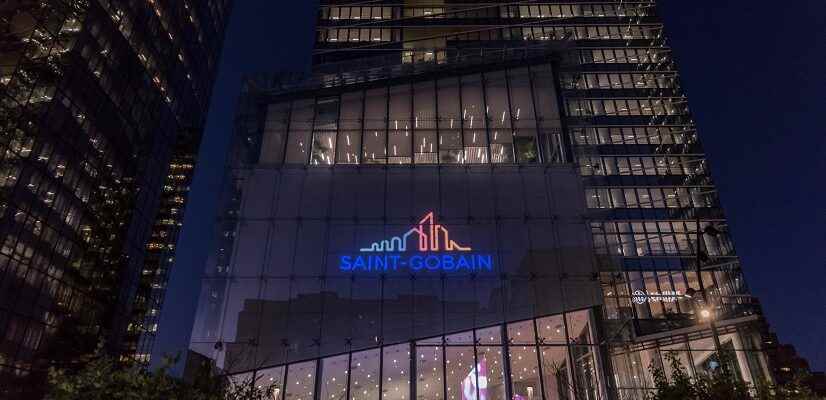“That’s it, we’re there, has the stock dropped enough? » The analysis note of the investment bank Stifel on Saint-Gobain reflects the mistakes, the reluctance, the lack of conviction, which currently reign in the financial sphere. After this flagship of decarbonization has plunged 40% on the stock market since the peak in January, what to do? Can we again, as an investor, calmly buy shares in the manufacturer of building materials (Celotex insulating foams, Formula molding plaster, Dahl plumbing accessories, Glassolutions glazing, etc.)? Wait a minute !
Even for a company like Saint-Gobain, a champion in a profession of the future, the current environment is complicated. Raising interest rates by the world’s major central banks and soaring energy prices have dried up global liquidity. Analysts at Stifel, Tobias Woerner and Augustin Cendre, who take advice to “hold” on Saint-Gobain (with a price target reduced from 50 to 47.5 euros), believe that the economy will deteriorate further before to get better. “We are still waiting for the ISM to fall below 50 [sous ce seuil, l’indice d’activité composite de l’industrie et des services américain entre en contraction] and for the price of oil to be well below $80 a barrel for the Fed to pivot”they write.

Of course, the scholarship holder with a nose wants to have a leader in sustainable construction in his portfolio, who works to make our homes and offices cooler in the summer and without heat loss in the winter. The explosion of the energy bill, the search for savings for households and sovereignty for States creates powerful calls for air for the products of the French group. Saint-Gobain, which will publish its third quarter accounts next week, plans “Three decades of growth. » For now, Tobias Woerner and Augustin Cendre anticipate “solid sales” for these three months when the group has “pricing power”, i.e. it is in a position – to a certain extent, this power has its limits – to increase its selling prices without scaring off customers, to partly offset the surge in production costs. Further, they plan “long-term growth of 14.1%”compared to a consensus of +12.2%.
Renovation, which accounts for half of the group’s billings, is more resilient to the economic cycle, but it is not infallible and certainly cannot compensate for the weakness of new construction, with, in the end, an impact on profitability . Compared to the 2021 record, the margin is expected to decline this year. The Stock Exchange, according to Stifel, has already integrated “a global financial crisis-like drop in EBITDA” (-32%). The upside is there but, in relative terms, compared to competitors, Saint-Gobain remains expensive. In the event of new negative developments in the business, market clearings will first affect French.
“Input cost inflation remains an issue and forecasts of[une augmentation de] 3 billion euros (2 billion euros for energy and 1 billion euros for materials) may well be too low”, we fear at Stifel. But the good news, especially with a business as energy-intensive as that of Saint-Gobain, is that the group has covered “approximately 80% of its natural gas and electricity purchase needs for the whole of 2022 and approximately 60% for 2023.” In addition, gas prices, although still high, are finally starting to come down while material costs seem to have peaked at the end of March.
“A Simpler Strategy”
The other big question that still needs to be answered is whether the group, engaged in an operation to overhaul its brands and assets, has changed for the better. Analysts at Stifel believe that “the value creation of the latest acquisitions has yet to be proven” but, on the surface, they say ” to like “ what they see, namely “a ‘value’ stock with significant exposure to Europe, a simpler strategy, more focused activity (with more things to do) and a good sustainability footprint. »
Earlier this month, the financial news agency Bloomberg reported that the process for the sale of Jewson, the British building materials retailer, had begun. That the sale in sight targets this asset of the distribution (sector with the lowest margin) has, in all likelihood, greatly pleased the activist shareholder Bluebell Capital. The London fund, which holds less than 0.5% of the capital, considers the financial results insufficient and pushes the group to split the distribution activities (La Plateforme du Bâtiment, France Pare-Brise, Jewson, etc.), so that it can focus on manufacturing. Saint-Gobain sold Point.P.
Assets leave the bosom, others enter it. Recently, the French completed the acquisitions of the Canadian company Kaycan, which manufactures siding and vinyl coverings, and the American construction chemicals group GCP Applied Technologies.
